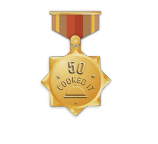

 Benefits Of Eating Herbs in our food.
Benefits Of Eating Herbs in our food.


Jul 06, 2020
Fresh herbs often contain higher antioxidant levels compared to processed or dried herbs but if you are using herbs in order to harness their health-promoting aspects first and foremost, aim to add your fresh herbs at the end of cooking or as you serve to preserve these properties.
Herbs are the leaf part of a plant that is used in cooking – these can be used fresh or dried. Any other part of the plant, which is usually dried, is referred to as a spice. These include, for example, bark (cinnamon), berries (peppercorns), seeds (cumin), roots (turmeric), flower (chamomile), buds (cloves) and the stigma of a flower (saffron).
Herbs are a fantastic way to add flavour and colour to any sort of dish or drink, whether sweet or savoury, without adding fat, salt or sugars. In addition to flavour and colour, they each also tend to have their own set of health-promoting properties.
Generally, fresh herbs are delicately flavoured, so if adding them to your cooking, do so in the last few minutes. Tasting your dish as you go along will help you tell if you’ve added enough. If not enough herbs are used, then little difference will be made to the flavour of the dish, but if too many herbs are added, their flavour will overpower other ingredients.
Herbs can be used in an unlimited number of ways. The more you use herbs, the more adventurous you will become.
Besides boosting the flavours, smells, looks and textures in your meals, the more herbs you try, the wider the variety of potential health benefits you are likely to receive.
Turmeric is a bright yellow aromatic powder which is made from the dried root of the plant Curcuma Longa, a herbaceous plant of the ginger family. ...
Over the years as technology has progressed, scientific findings have given facts, rationales, and names to a lot of age-old habits and ideas. ...
Over the years as technology has progressed, scientific findings have given facts, rationales, and names to a lot of age-old habits and ideas. ...
Whoever said ignorance is bliss, definitely did not know how to read nutritional labels! Whether you are the Eat to Live type or the L...